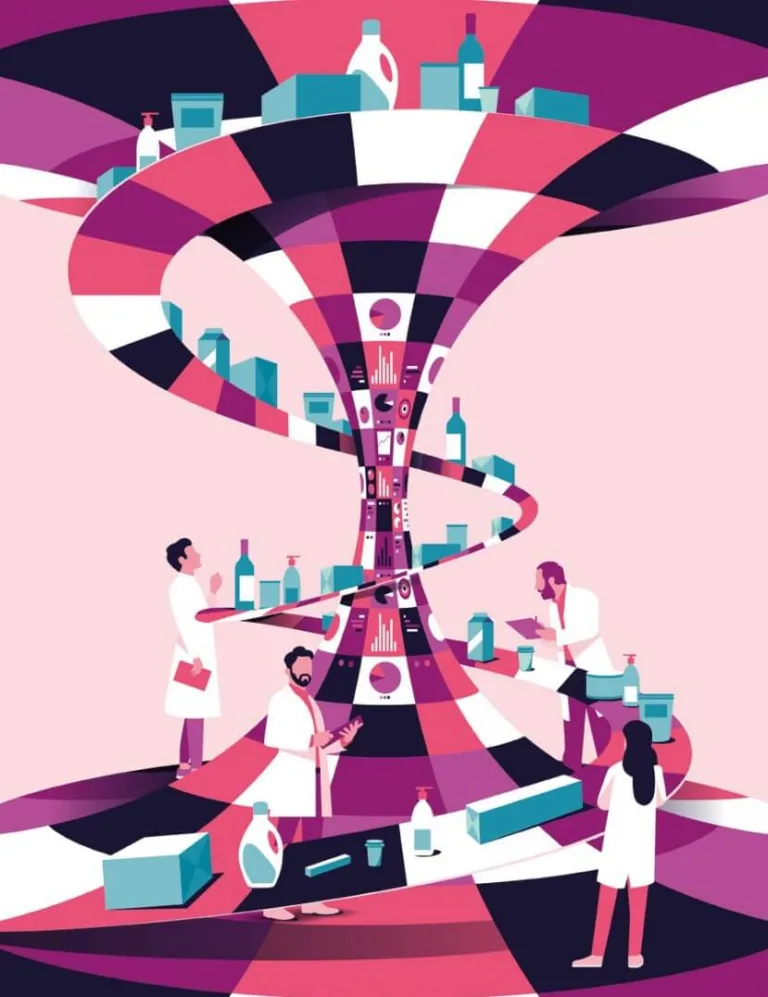3 Scenarios for the Future of Packaging by 2050
More than the symbolic ‘clothing’ of the product, packaging is also an embodiment of our modes of consumption for which it must offer a constantly renewed user experience. From frugality to nomadism and the digitalization of society, we have constructed three exploratory scenarios to imagine the future of packaging in the middle of the century in different contexts.
Quelles sont les principales tendances à l’oeuvre dans les règlementation sur les emballages ? Sont-elles en ligne avec les aspirations des citoyens en termes de consommation responsable ?
Packaging and its user have become accomplices in the service of a sustainable economy and the preservation of the planet.
This type of innovation has finally proven to be an ally for recycling. Types of codes invisible to the naked eye that can contain a multitude of information on the packaging and its contents, the digital watermarks present on packaging are in fact a valuable aid for the cameras integrated into the optical sorting machines. As a result, the quality of recycling has improved considerably. It remains to be seen whether the argument will be enough to convince the most skeptical of the ‘invisible digital pollution’ generated by these “innovations perceived as superfluous,” to use the words of Gaëlle Pantin-Sohier. Already in 2022, digital represented 3% to 4% of greenhouse gas emissions on a global scale, a proportion that the advent of the cyber world will only increase.
Tertiary sector employees do not hesitate to mix work and holidays and opt for ‘fully remote’ contracts. The urban exodus and the development of neo-ruralism have seen the emergence of a new generation of consumers constantly on the move and always in search of ‘experience,’ as evidenced since the 2020s by the progression of neo-spiritualities and the well-being industry within society.
The importance of experience is also reflected in a different relationship with packaging, adapted to these new lifestyles. Priority is given to practical and robust containers, which you are not afraid to break or pierce in your bag. On the food side, the bento, a sort of compartmentalized lunch box from Japan, has become a must in the course of the 2020s for all these workers accustomed to eating on the go. A success partly due to its potential for personalization, analyzes Gaëlle Sohier-Pantin.
It is something that is fully expected by consumers. The advantage with bentos is that they are composed of several parts and you can completely customize them according to your type of lunch.
Des évolutions guidées par l’expérience utilisateur
Plus que de répondre aux besoins des consommateurs (qui reste sa priorité absolue), l’emballage se doit d’accompagner mais aussi d’incarner les mutations de la société, que l’on se dirige vers un monde plus frugal, plus digitalisé ou plus nomade. Les défis s’annoncent nombreux : comment vendre des packagings plus fins si les consommateurs ont davantage confiance dans la qualité des produits lorsqu’ils sont enrobés d’un emballage dur ? Est-ce compatible avec la demande d’esthétique et de personnalisation ? La balle est du côté des designers, à eux de rendre désirables les packs de demain en les enrobant de nouveaux imaginaires.
Pour Joseph Mazoyer, tout le défi dans les prochaines décennies sera de résoudre ce paradoxe apparent « d’aller vers du moins » dans un contexte d’épuisement des ressources, tout en continuant d’assurer le confort des utilisateurs. Ça tombe bien, ceux-ci sont toujours « demandeurs d’un renouveau d’expérience »…
